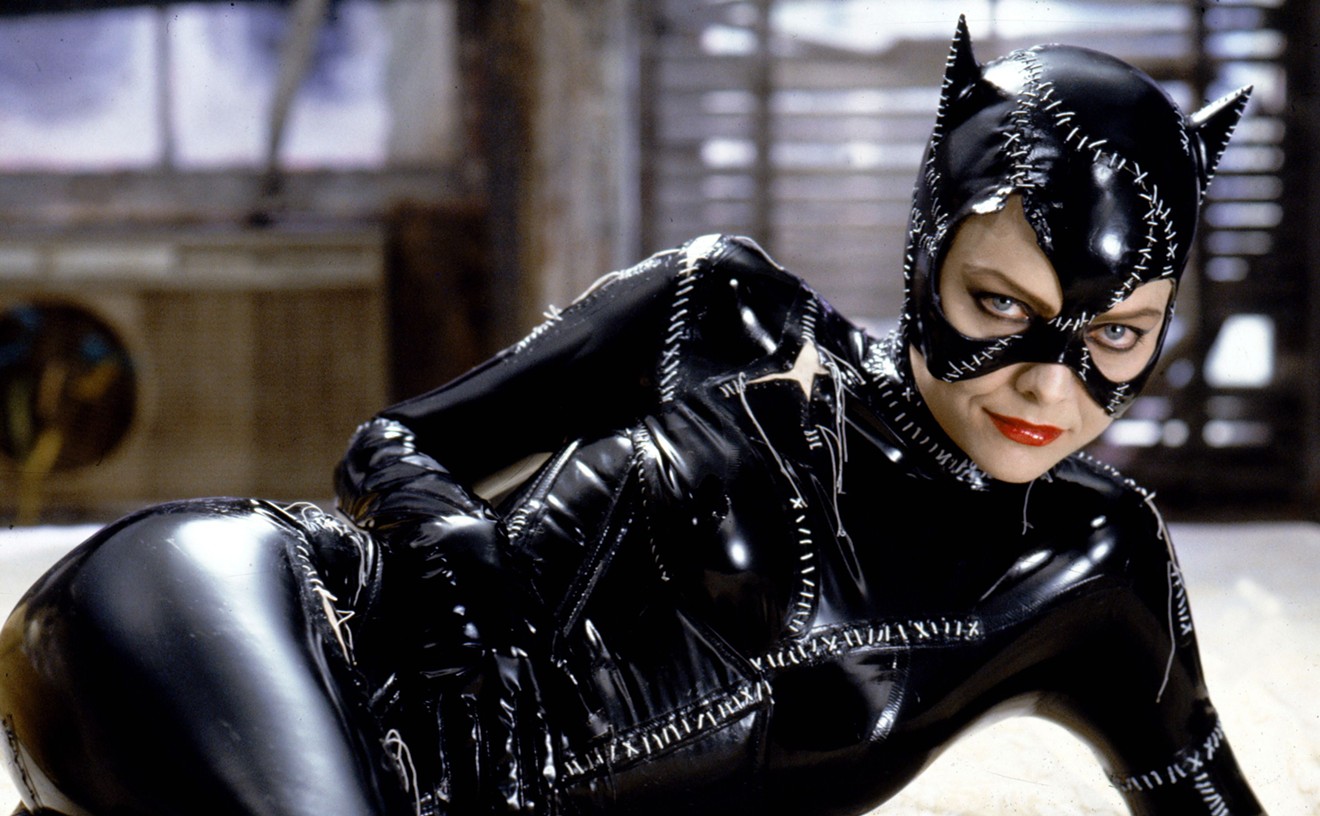By Tim Hanley
Chicago Review Press, 304 pp., $18.99
Oh sure, Wonder Woman is the comic-book-heroine darling of the moment, thanks to that movie. But let’s face it, she’s a 1-percenter. Born to wealth and privilege on a private island and outfitted with super-accoutrements, she was bred to succeed. Now Catwoman, there’s a real self-made success story: straddling a life of crime, romance and the occasional do-gooding with nothing but wits and whips. There’s your more interesting story!
After all, this is a woman who, for more than 75 years, has often turned the Dark Knight into a pile of moony-eyed mush. The kind of woman who could, in her third appearance in 1940, stun the Caped Crusader with a kiss. Even Commissioner Gordon had to chide him for letting her slip away so often. “It’s too bad she had to be a crook!” he observes.
Hanley, who previously penned similar incisive histories on DC ladies Wonder Woman and Lois Lane, does a wonderful (and very detailed) job writing in depth, but with humor and observations that will appeal to both comic-book geeks and pop-culture lovers. He charts the changes in Catwoman’s costumes and character traits over the years, but also in every incarnation across comic books, films, TV shows, cartoons and video games.
“Catwoman has been a mercurial character, with her many incarnations ranging from criminal to hero. In the black-and-white world of superheroes, she exists in shades of gray, yet she is ultimately defined by her villainy,” Hanley writes. “As a villain, she was meant to represent the opposite of what a good woman should be, but her supposedly negative traits come off looking like far more fun. When many women in superhero comics were damsels in distress pining for their hero, Catwoman was independent and carefree, reveling in corruption and using her sexual wiles to her advantage.”
Catwoman’s origin story may not be as interesting (or twisted) as Wonder Woman’s, but it’s not without controversy. The grandiose and self-promoting Bob Kane was long credited with “creating” Batman and his gallery of friends and villains, along with writing and illustrating the stories. But that was all a lie, as Kane was largely a fraud. Comic-book historians now credit writer Bill Finger and artist Jerry Robinson – who often “ghosted” for Kane – with most of the creation mythos, a practice that would be impossible to pull off today. And Kane himself was no champion of women.
“Cats are cool, detached, and unreliable,” he wrote in his autobiography. “Cats are hard to understand, they are erratic, as women are.”
The theme of Catwoman’s sexuality is rampant in the book. Hanley spends many pages giving the pros and cons of how the character has used it over the years to get what she wants, regardless of the man she’s targeting.

L: Critics said Jim Balent's hypersexualized '90s Catwoman crossed into comic porn. But it sold well. R: After starting the decade with a string of small robberies, Catwoman became a full-fledged villainess. Detective Comics #122, 1947, art by "Bob Kane" and Charles Paris.
DC Comics
Her character in a Batman video game is freely called “bitch” by others and shows plenty of side boob. As recently as 2012, a cover of one of her books was widely derided and parodied when, in an effort to showcase every exaggerated curve of her body, artist Guillem March put her body in an anatomically impossible position. Granted, that was an era when artists wildly exaggerated all superhero bodies, but the oversized muscles in male characters showed strength while the women just oozed sex.
Catwoman’s personal history has also evolved in comics lore, far more than that of most of her contemporaries. Over 75 years she has been a cat burglar, a criminal mastermind, an animal-rights advocate, a prostitute, a flawed hero, a dominatrix, a misunderstood woman, a mother and – in her 2014 incarnation – a bisexual mob boss.
For most people, their memories of Catwoman correspond to her portrayals in movies and on television – including the trio of ladies (Julie Newmar, Lee Meriwether and Eartha Kitt) who alternately flummoxed and romanced Adam West’s Caped Crusader in the ’60s, each bringing her own interpretation to the role.
Hanley also goes deep into two
When the latter film won many statues at the 2005 Razzie Awards, Berry actually showed up to accept her “Worst Actress” prize, giving a funny “acceptance” speech while clutching her actual Oscar in the other hand.
So while in her career she has been both a feminist icon and an example of sexism – and everything in between – Catwoman is undoubtedly one of the most lasting comic book characters of either gender. And in this book, Tim Hanley has left no pile of kitty litter



